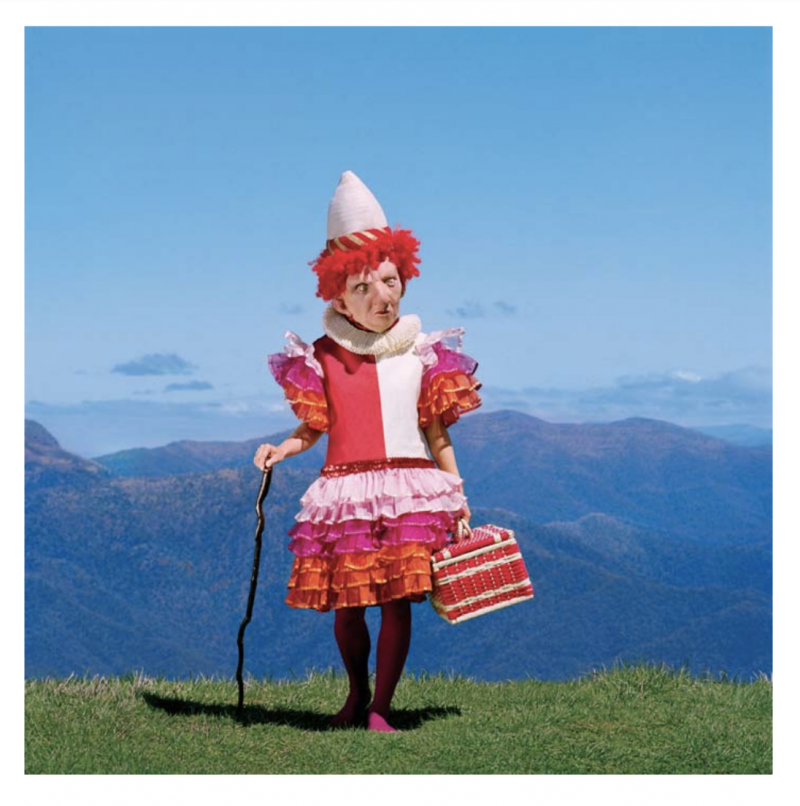For over a decade, Polixeni Papapetrou has been engaged in an intimate photographic collaboration with her children and her children’s friends, and has gained international recognition for her ability to contemplate the childhood imagination. Her art is a contrapposto of drama and interiority. Its physical creation involves a diligent trawling of charity shops, garage sales, and eBay auctions in relentless search of the perfect costume, and long drives to magical places in nature in search of the perfect set.
Papapetrou left a degree in law to pursue art. She lives in Melbourne, Australia. This interview was conducted by email over several winter months.
—Caia Hagel
The Wanderer #3

THE BELIEVER: Tell me about The Wanderer #3.
POLIXENI PAPAPETROU: In 2009, my family and I traveled to the high country in Victoria, Australia, to make a photograph of a human/animal figure as the symbolic wandering figure. This work is set in the mountains because the mountain landscape feels as heroic as the figure that I wanted to portray. My idea was that in this majestic setting, the human figure could transcend its material existence by reflecting upon a spiritual one. The initial idea of using the figure of the wanderer was inspired by Caspar David Friedrich’s painting Wanderer Above the Sea of Fog (1818). The archetype of the wanderer symbolizes the greatness of man in the face of the universe. But I didn’t want to create a symbolic picture of the heroic archetype, which the wanderer tends to be in art, but rather a “heroic other”—symbolizing individuality and a unique voice. The image is meant to be sympathetic. It isn’t meant to be some kind of postmodern pastiche. It’s not meant as a satire of the mysterious Romantic alpine archetype; it’s more about a theatrical person coming to a point in life and wondering about being itself. The landscape is sublime, and by placing a kind of comic figure on the high plateau, I’m thinking about an existential richness and void that people share, regardless of whether they’re heroic or pathetic or grotesque. It’s fascinating how our culture admires children when they express themselves, dress up, pretend, fantasize, and have the ability to become other. Yet at some point we begin to fear this difference, and it slowly threatens, so we rein it in. The wanderer speaks of this otherness and of our quest to remain an individual, to seek a point of difference in our own life that marks it as distinct from others in a global population of seven billion people.
BLVR: Tell me about your use of costume...
You have reached your article limit
Sign up for a digital subscription and continue reading all new issues, plus our entire archives, for just $1.50/month.
Already a subscriber? Sign in




